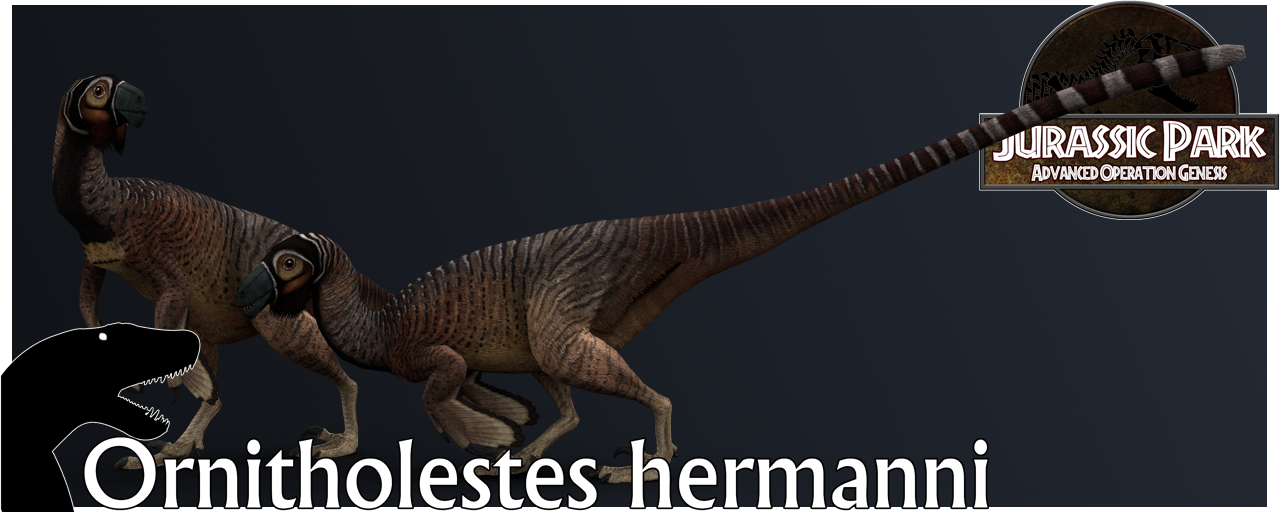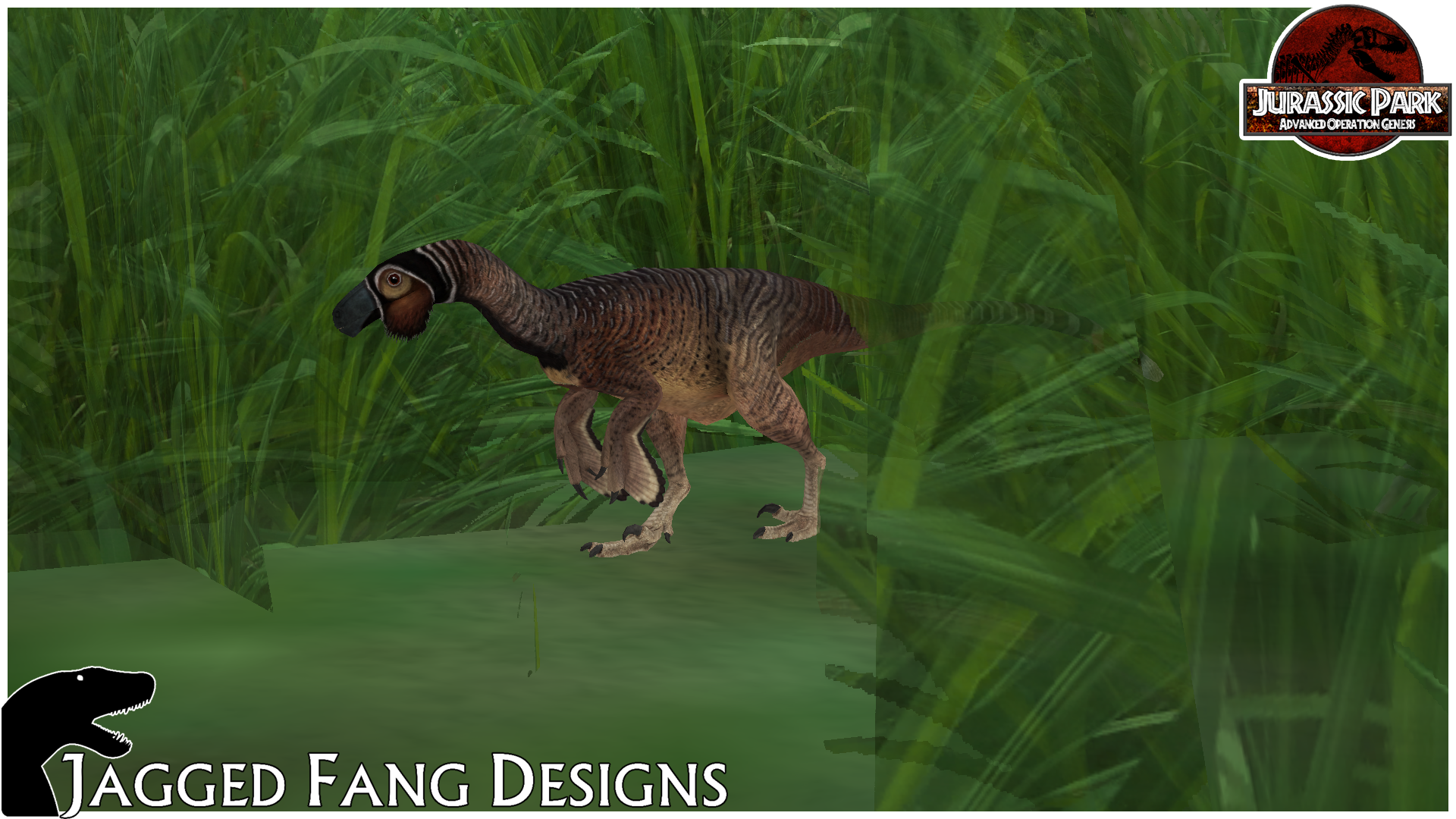

Species: O.hermanni
Animal Class: Small
Standard Containment Procedures:
Groups of up to four (4) O.hermanni individuals are to be contained within pens that have a minimum floor area of six hundred and twenty five (625) square meters, the fencing of these containment areas are to be of ‘low’ classification, however, these fences must be made in such a way as to prevent O.hermanni individuals from climbing out of their containment area. These fences are to be checked on a weekly basis for damage or general wear and repaired by assigned maintenance staff if necessary.
The containment area’s for O.hermanni individuals/groups are to be primarily made up of thick, ground covering plants such as large ferns within a heavily-forested, or forest-emulating, area to facilitate natural climbing behaviours from O.hermanni individuals. Alongside this containment areas are to feature one, or several if containment area size allows for it, flowing streams for O.hermanni individuals to drink from and hunt for fish, water-based insects and amphibians in. Including these naturally provided feeding/drinking areas O.hermanni groups should be provided with two adult Brown Rats per individual per day, this feeding can be done by hand and is in fact encouraged to be done so as it results in O.hermanni individuals becoming more familiar with humans and thus more willing to approach guest viewing locations. On occasions O.hermanni groups can be provided a fresh goat carcass to eat at their leisure, during the four day period after this carcass is introduced to the containment area, O.hermanni individuals are not to be fed their usual allotment of Brown Rats. After this four day time period the goat carcass is to be removed, the area cleaned and the regular feeding of two adult Brown Rats per individual per day is to be resumed.
Recall procedures for O.hermanni individuals follow standard Class D Theropod Containment Procedures. Usage of lethal force is strictly prohibited due to the lack of threat O.hermanni individuals present to park patrons and staff, however, issuing of both tranquilizer rifles and net guns is fully authorised and does not require the consent of the board of directors for usage in recontainment of O.hermanni.

History & Description:
O.hermanni is among the smallest Dinosaurs available on the market hailing from the Morrison formation with a straight line length of one point seventy five meters in length (1.75m) on average with record breaking individuals reaching one point nine meters (1.9m) in length and weighs in at around fourteen kilograms (14kg). Appearance-wise O.hermanni features a full covering of feathers, while due to its place as a primitive Maniraptoromorph has prevented it from possessing the full tail fans and wings that later Maniraptorans such as V.mongoliensis have, O.hermanni makes up for it by having a heavily patterned body made up of a wide mix of full stripes, tail banding and broken up stripes on the body and arms. The colouration of these stripes varies heavily but is most often a mix of black, white and dulled reddish browns, the latter colour matching the overall colouration of the coat O.hermanni has. Unlike later Maniraptorans O.hermanni also lacks a heavily developed ‘killing claw’ on its toe, which, while fearsome in appearance, is supported by a toe that isn’t entirely developed for slashing with O.hermanni itself actively using it to help balance itself when perching on logs and low tree branches.
Much like G.wuccai, O.hermanni was introduced quite early into the park industry, however unlike G.wuccai which suffered huge problems due to being the first non-avian Dinosaur to be reintroduced to the world O.hermanni had the good fortune to only want a small amount of other O.hermanni individuals around to socialise with as opposed to the huge swarms that G.wuccai not only preferred but demanded. Due to its diminutive size and relative harmlessness even towards younger Dinosaurs O.hermanni can be kept with an exceedingly wide variety of animals from Sauropods to Ornithischians so long as they are suitably larger than O.hermanni, typically this size difference needs to be of a minimum of two meters (2m). Examples of animals that O.hermanni can be safely kept with include but are not limited to, C.aphanoecetes, B.excelsus, T.latus and O.nigeriensis.
Behaviourally O.hermanni is an inquisitive and highly sociable animal which is often quite comfortable with interacting with animals much larger than itself that it doesn’t perceive as a threat, often treating larger animals as giant feeding platforms by climbing on them and consuming insects, parasites, dead skin among other potentially nutritious debris that can often be found on larger Dinosaurs. Among its own kind O.hermanni lives in small groups typically made up of four individuals with young animals leaving their group upon reaching maturity, or in the case of the park industry, given to other facilities or placed in other containment areas. These groups have a highly strict attitude towards outside O.hermanni, often bullying newly introduced O.hermanni even when the group is only two or three individuals rather than the usual maximum of four, during such introductory periods staff are directly instructed to monitor the newest individual and ensure it is not heavily injured or actively denied food and water by the other animals in the containment pen.
While a simple 1 star animal O.hermanni is sought after amongst private collectors as its presence in most enclosures aids in pest removal and keeping larger Dinosaurs clean through their parasite-removal tendencies. Alongside this due to its friendly disposition towards other animals, including humans, O.hermanni is among the first Theropods to be actively considered as a viable candidate for sale in the pet trade. However, the primary factor against this decision currently is the presence of three populations of O.hermanni in the wild, one located in [REDACTED], Europe, [REDACTED], North America and [REDACTED], Africa. Extermination of these populations before they become a larger threat to the ecosystems they reside in is currently underway.



